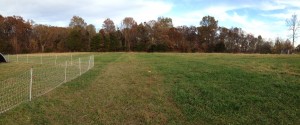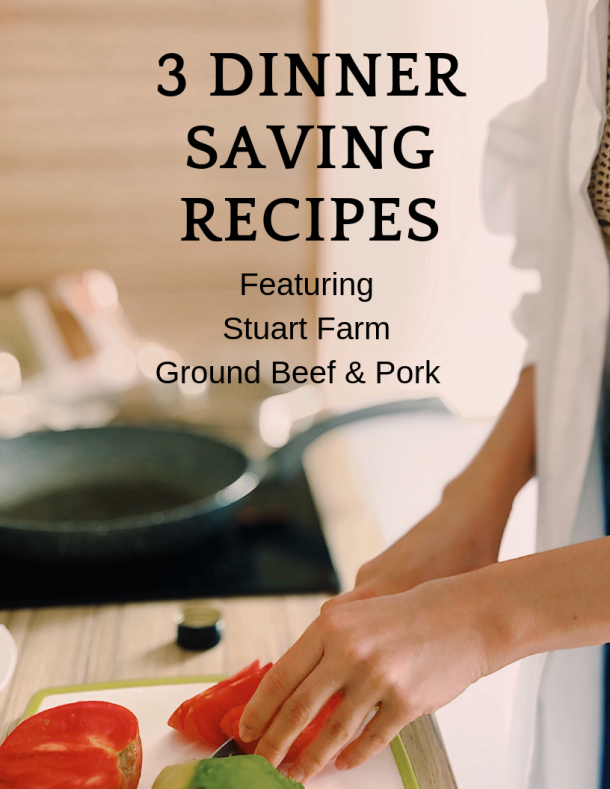We started raising Freedom Rangers in 2011. We both have experience with Cornish Cross chickens, what you buy in the grocery store, and while the meat was good, the way the chickens behave was not what we wanted. The Cornish Crosses are bred to grow fast and big. In 6-7 weeks you can butcher and have a 4-5 lb dressed bird. They don’t range very well and tend to sit at the food tray and eat. Sitting as much as they do, they tend to have missing feathers on their breasts. They also tend to have legs problems because of the rapid growth rate. They just don’t look like something we would want to eat, so we searched until we found a better meat bird for us.
The Freedom Rangers take an extra 2-3 weeks to get to weight and like to range. They do well in the tractor and electric netting set up we have. We get rave reviews from our customers on the taste of the Freedom Rangers, so we stick with them.
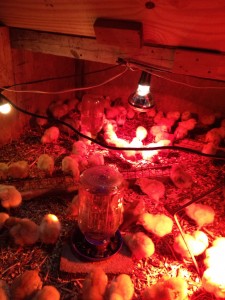
We get our day old chicks and into the brooder they go. We raised a few batches on dried grass clipping bedding and then switched to the deep litter method. We pile about 6 inches of mulch and wood chips into the brooder and instead of changing out the bedding, we simply rake to turn over the soiled areas, adding more mulch/chips as needed. Using this method gives the young chicks a good foothold, making sure their legs grow properly, and encourages scratching and foraging. The added benefits of this method are it begins to compost and creates heat and it encourages insects and worms to live in the bedding, giving the chicks something extra to eat. And it always provides interesting sticks, leaves, and goodies for the chicks to play “keep away” with.
Throughout their life, their water has homemade vinegar in it to help with coccidiosis, since we do not medicate any of our birds. They are fed a special feed blend with mineral supplements twice a day, and once they are older, constant access to pasture. Our feed ration is a blend of wheat, corn, soybean meal, fish meal, aragonite (calcium), and Fertrell’s NutriBalancer minerals. We ferment the grains for 28 hours and top dress with the powdered feeds. We start the chicks out on fermented feed and have noticed the brooder does not smell nearly as bad as before, and the poops are solid with no grains present.
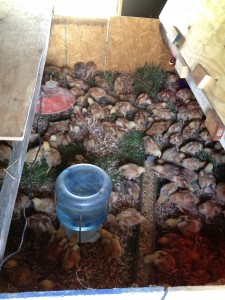
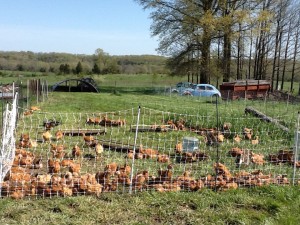
Once the chicks are just about feathered out and they can maintain their own temperature without the aid of a heat lamp, they are moved outside into the moveable tractor.
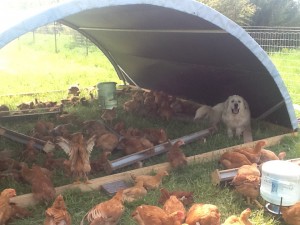
The tractor gets moved around our pastures inside an electric netting fence. The tractor is moved during morning and evening chores to make sure they have a clean space to eat during the day and roost at night. At about 4-5 weeks, you can start to tell the roosters from the hens. The roosters will start to have staring contests which lead to fights and the hens are noticeably smaller. At this point, we separate the roosters from the hens to keep the hens from being mounted and scratched up.
Each batch we have raised has been different. One batch will stay out and forage most of the day, others will hang in and around the tractor more. Some can’t wait to see you and come running to hang out, others couldn’t care less if you are there, much less if I am singing to them. Some are messy eaters and need the feeders cleaned out 4 times a day. It’s interesting to see all the different personalities in a group. The rooster that is always picking fights, the runt who won’t back down, the groups of hens that sit in the corners or along the fence.
For anyone wanting to raise their own meat birds, we would highly recommend Freedom Rangers.

